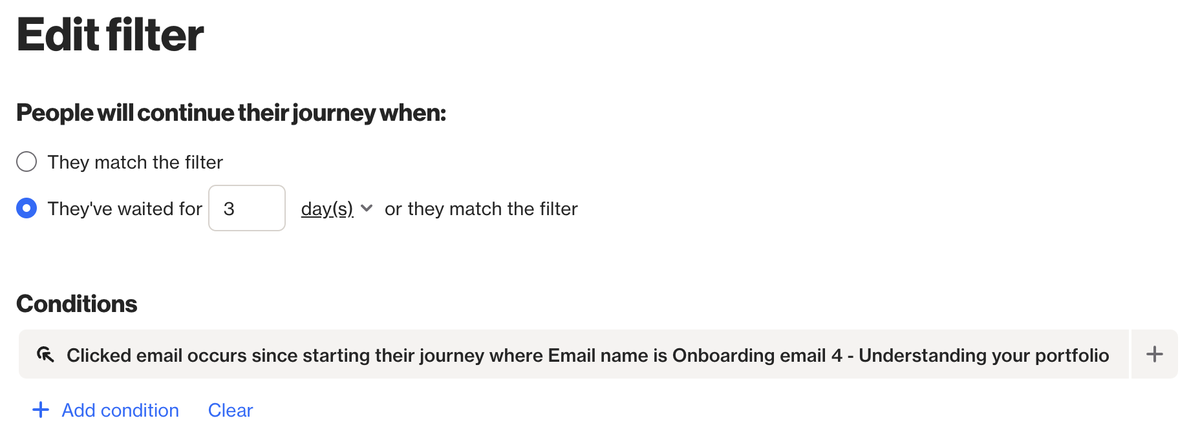Journey filters and split shapes
Overview
Journey filters help users manage how and when contacts progress through a step. Filters can be set so contacts either wait until they meet specific criteria or for a set time (like 3 days) to check if they qualify. Split shapes allow users to divide their journey into different paths based on percentages.
Accessing Journey filters
To access Journey filters, go to Marketing > Campaigns > Select your Journey > Edit > + > Filter.
Journey filters
Journey filters help you control how and when contacts move through a step.
EX: You can wait 3 days to see if someone opens an email. If they do, they’ll move to the next step right away. If not, after 3 days, they’ll proceed to the next shape, giving you the opportunity to resend the email or take another action.
Choose how contacts move forward
- When they match the filter: Contacts will proceed once they meet your criteria.
- After a set time: Contacts will continue either after a specified wait or once they match the filter.
NOTE: By setting a timeframe for contacts to proceed through a filter, you can prevent them from being removed from the journey due to inactivity. This ensures they don’t exit the journey simply because they haven't taken action within a certain period. (i.e. they meet the They don’t move for X days criteria for the journey’s People exit when condition).

Filters with x activity occurs criteria can be set to match attributes with the entry criteria.
NOTE: When using a where clause in journey conditions, only data from the last 90 days is considered, even if data retention is enabled for that activity.
Learn more about matching activity attributes in shapes.
Using split shapes
With split shapes, you can divide your journey into different paths based on percentages, controlling how many contacts take the left or right routes. The split works on probability with a leveling approach.
EX: In a 75/25 split, the first time a person enters the shape they are randomly assigned to a path based on the given probabilities. If the person went down the right path (25), Ortto will then ensure the next three people that enter the split will go down the left path (75) to ensure the ratio is 3:1.
The split shape continuously balances random entries with leveling decisions, ensuring the correct ratio is maintained, no matter the size of your audience.
